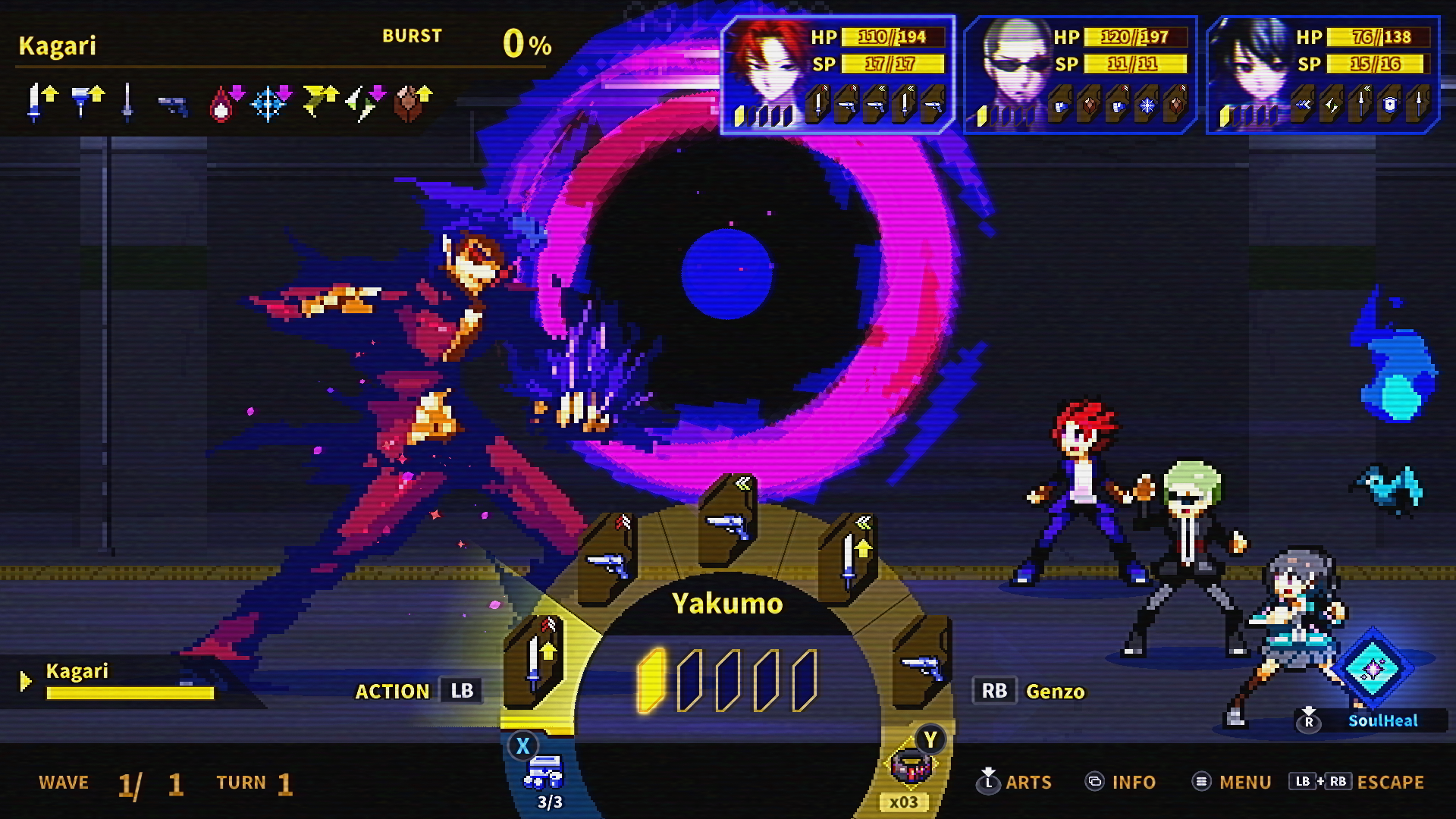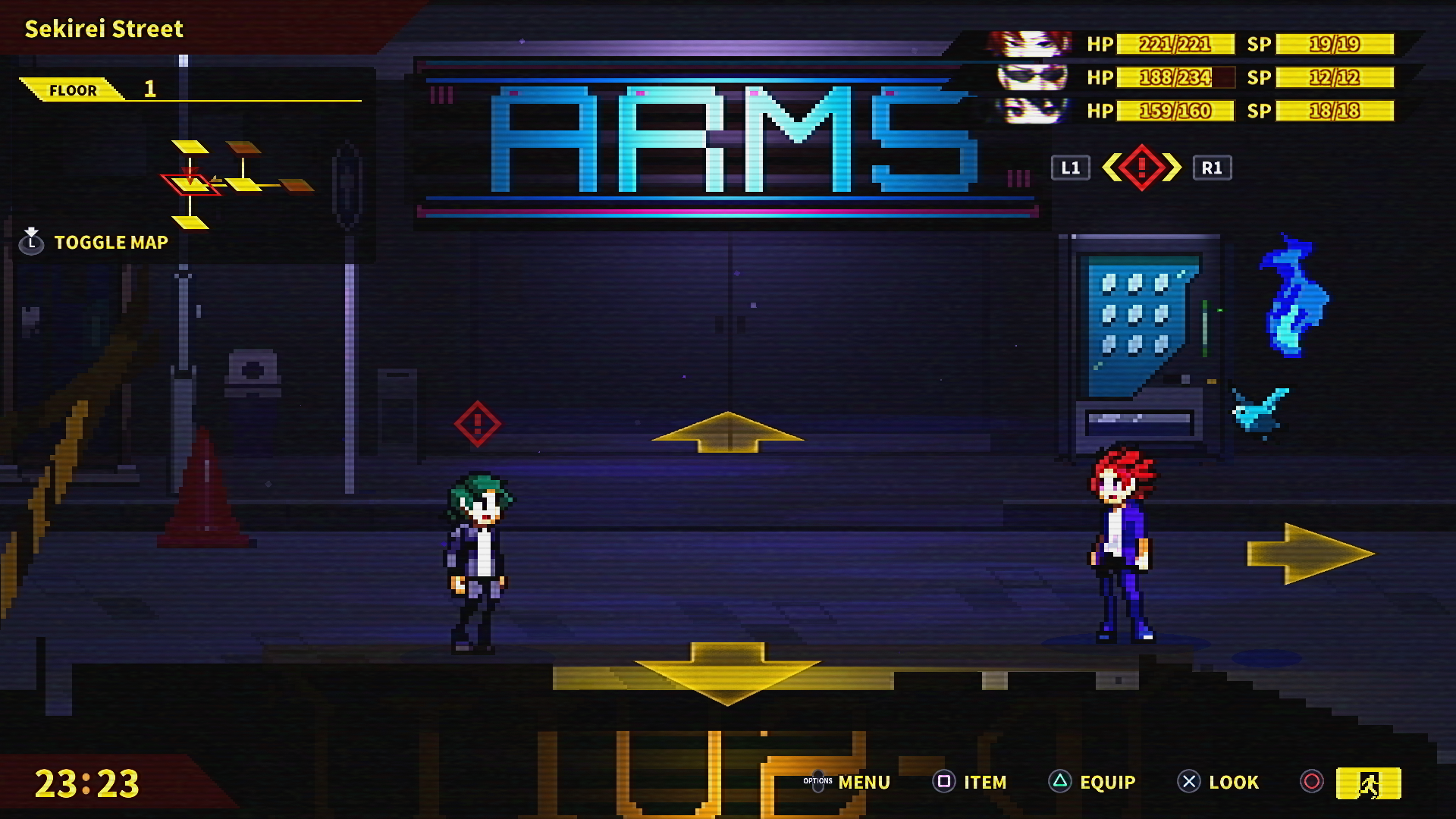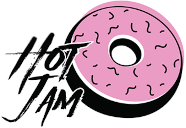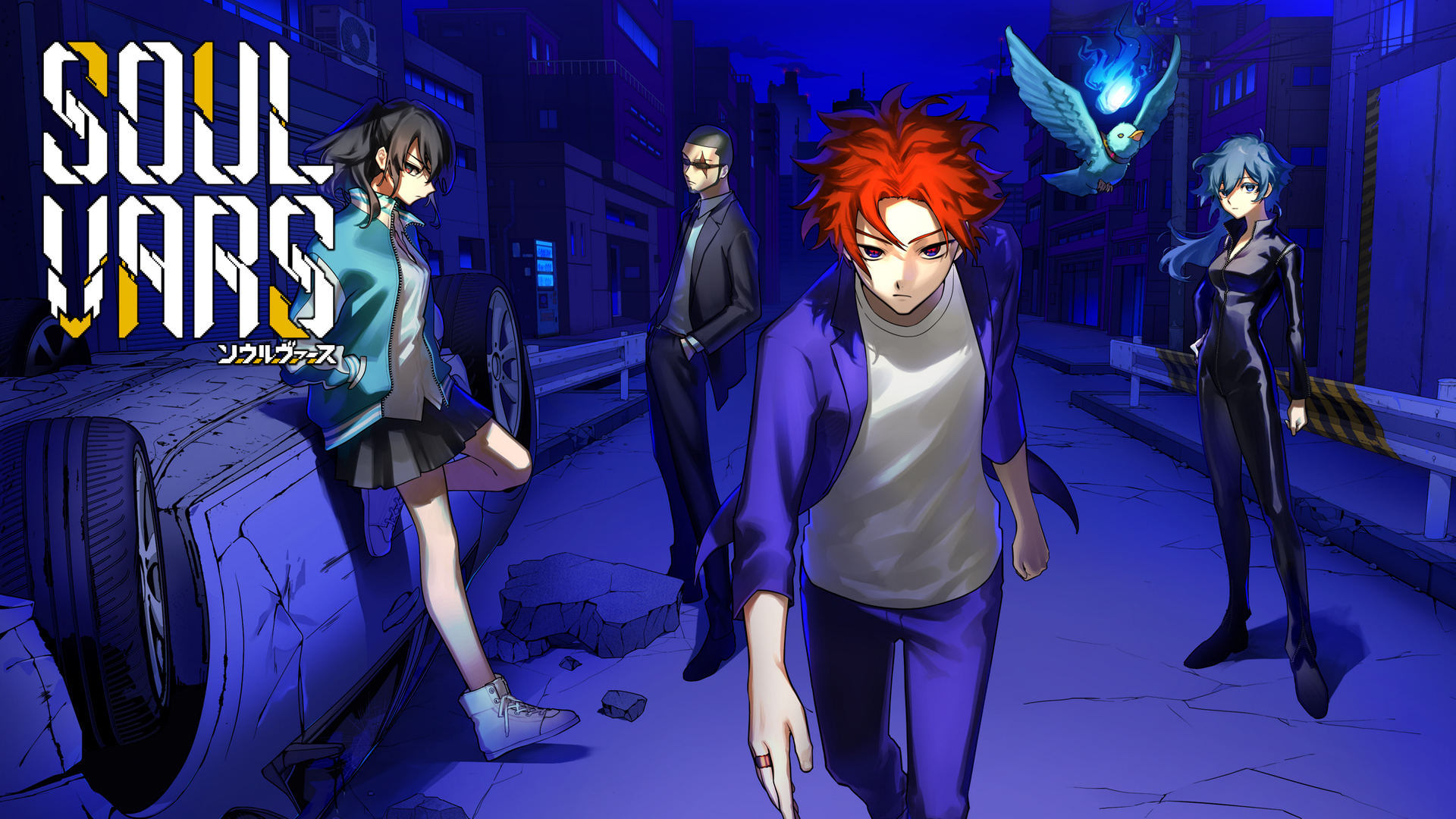RPGs come in many shapes and forms but few have combined the elements of fighting monsters via deck building combat, pixel-perfect art and a futuristic cityscape. This is Soulvars, formerly a mobile-only game that has recently launched on all major platforms. Through a slick experience on PC and an addicting gameplay, there’s plenty of promise for Soulvars to now reach a wider audience of gamers.
A Story of Souls
Soulvars takes place in what appears to be a post-apocalyptic world. It’s an era where humanity is threatened by the existence of distorted Dominators, beings whose forms appear tied to the world’s technological advancements. It is up to Soulbearers, unique humans with alternate Souls and abilities to combat the Dominators and rescue civilians. To this end, Players assume the role of Yakumo, a freelance Soulbearer who takes on assignments from the Dominator Disposal Organization (DDO).

Beyond this, the game is light on the story elements, and it can be hard to follow when characters communicate almost solely in one liners. It’s not 100% clear why Yakumo does what he does, what his ambitions are, or why there seems to be some disdain between him and the other members of the DDO. From reading some of the back-and-forth, it’s also apparent that there are already established relationships between characters that the player isn’t made aware of. As a fast-paced mobile game, it makes sense to focus primarily on actual gameplay as most mobile gamers are likely picking it up and putting it down in short intervals. But perhaps in producing the platform port, there could have been room to flesh out more details.
Turn-based Cards
Where Soulvars lacks in story, it more than makes up for with a very unique combat style. Battle encounters are turn-based and each move for a character is chosen from a wheel of options (called Soulbits) that effectively acts as your hand of cards. The amount of Soulbits you can use depends on your amount of AP. The more you have, the more attacks you can execute within a turn. The right combination of Soulbits will further unlock Arts, moves far more powerful than their individual Soulbit components. And when you’re in a pinch, try Alternation, a kind of limit break that transforms your character into their alter soul, allowing you to unleash some devastating attacks.

Early mobs are a fast clear but the game sends tankier Dominators your way fairly soon, which will force players into adopting a more strategic mindset with each battle. Enemy weaknesses and affinities are displayed in the top left corner, so building the right team of characters with the right equipment will help you take them down with greater ease. Yes, your playable characters will expand beyond just Yakumo, leading to an even wider pool of abilities. The result is gameplay possibilities that are truly endless, limited only by your knowledge of different Arts, Abilities and enemies. Pulling up the DDO NaviMenu’s Glossary will certainly be a regular occurrence, at least until you get the hang of what each Soulbit does and what to expect from different Dominators.
Exploring a Grid-based World
To travel from battle to battle, players traipse through a map, where each location is represented by a square. Aside from Dominator encounters, there will be small puzzles to complete, chests to open up, vending machines to purchase healing items from and the occasional side quest. It’s simple but effective at breaking up the cycle of battles. The environment art can get a little same-y though, and a combination of that plus my poor sense of direction resulted in me losing my way on more than one occasion.

The world is grim and many of the scenes depict destroyed vehicles, derelict buildings and a general sense of chaos. Yet there’s beauty in the damage, thanks to the beautiful pixel rendering and neon punk coloration. Dominators are fun to look at and each have their own unique style and themes that often hint towards their elemental affinity. Characters too have an interesting look and feel. You can just sense Yakumo’s indifference and Izuna’s spunk emanating from their little pixel bodies. Opening the Equip menu also gives you a better look at their intricate anime-forms, designed by “Act-Age” manga artist, Shiro Usazaki.
Players from more retro years of gaming might find themselves really gravitating towards the music and the sound of the game. In battles, the music is an energetic 8-bit melody, reminiscent of early Megaman soundtracks. Special attention has also clearly been given to the sounds accompanying your attacks, creating a very satisfying kind of play with every slash, punch and strike.
Soulvars is easy to pick up but hard to master. The fact that you’re thrown into battle
immediately as it starts truly sets the tone for the rest of your play. It’s a game that rewards independence, you’ll have to get used to figuring things out for yourself, whether through reading the Glossary or through in-battle trial and error. As a mobile game, the developers have created the perfect gameplay loop with a level of detail that’s just right. But as Soulvars takes on platform territory, there’s room for complexity that platform gamers might be looking for. A richer storyline would add some much needed depth to the game, and it’s not as if the premise is a bad one. Quite the contrary, it wouldn’t be a miss to see a Soulvars anime or manga adaptation. Knowing who the publishers are, that might soon be on the cards.

| Developer | ginolabo, SUCCESS Corp. |
| Publisher | SHUEISHA GAMES |
| Release Date | |
| Price (USD) | 16.99 |
| Platform(s) | Nintendo Switch, PlayStation 4, PlayStation 5, Windows PC, Xbox Series X/S |






